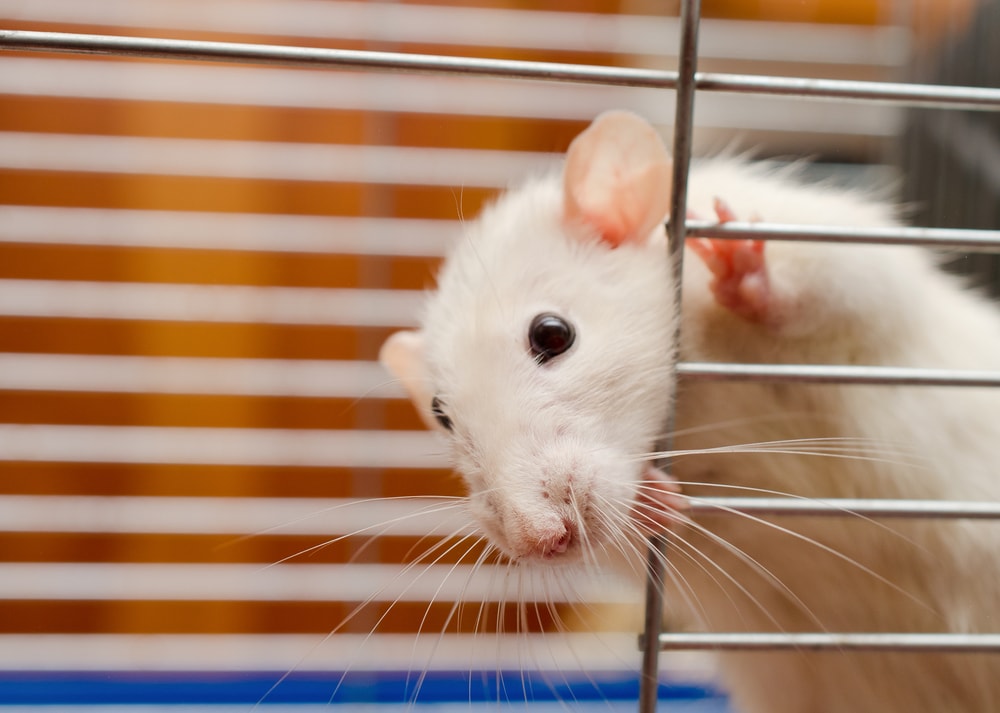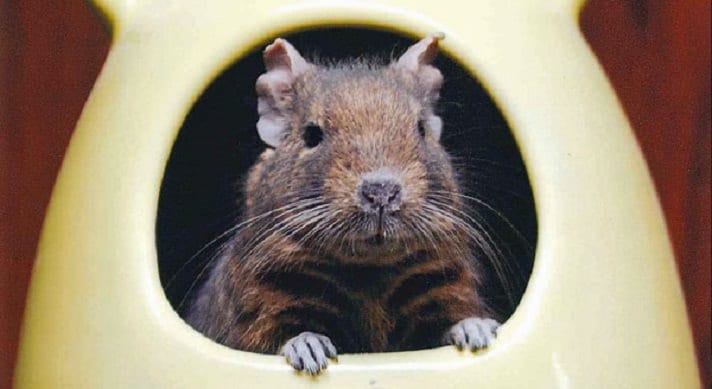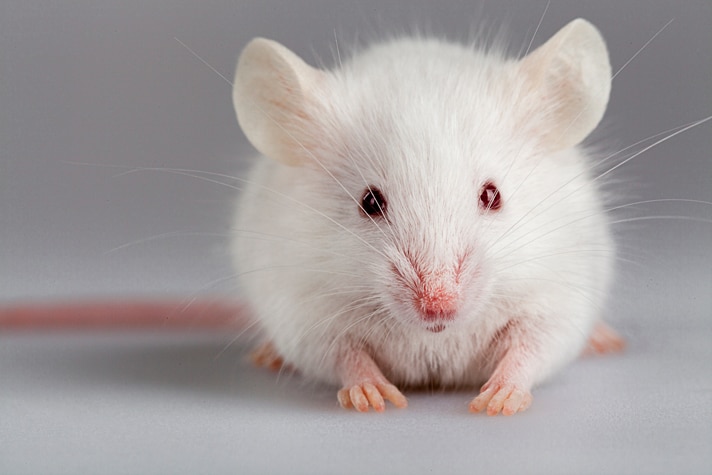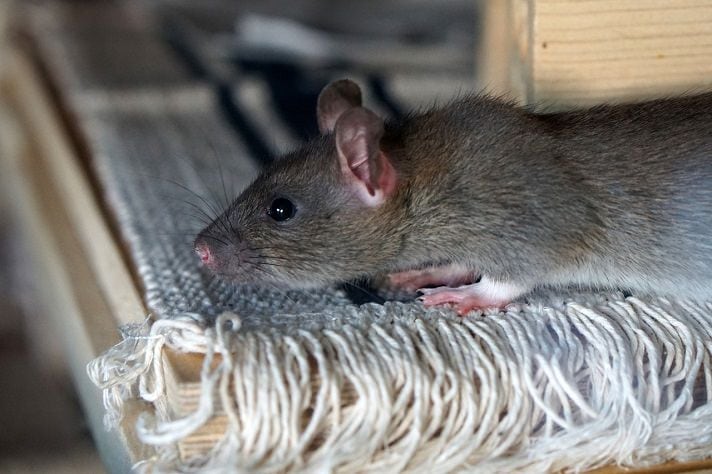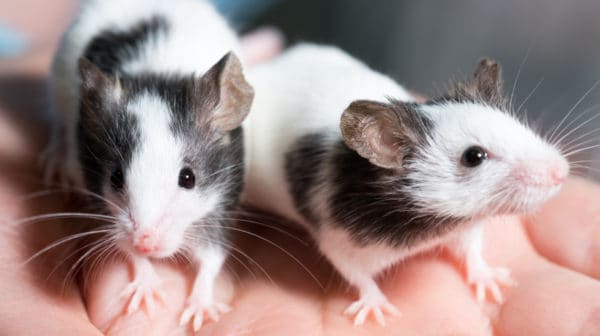Q:
There is something terribly wrong with my all black mouse, Mohawk. It started less than 24 hours ago. She’s dragging her ear close to the ground and doing “alligator death rolls” and occasional somersaults of sorts. I held her for three hours last night trying to comfort her. I petted/rubbed her to give her some relief from rolling and spinning, because while I was holding, rubbing and petting her it seemed to comfort her and minimize the rolling. Whenever I stopped petting her, she moved or looked up at me to see why I had stopped. Then she started uncontrollably rolling two or three times. I could stabilize her and help get her seated or nuzzled in my hand again. I put her back in her nest in her cage only because I was falling asleep with her. I made sure she could still eat some, and made sure I got her to have a sip of water. She can still sort of eat if the food is nearby, but I’m not sure if she can get to the water bottle. She was still willing and able to clean her face while I was holding her last night. I desperately look forward to your reply.
A:
There are two areas of the body that control equilibrium and your mouse can no longer control her equilibrium. These two places are in the middle/inner ear and in a part of the brain called the cerebellum. If one of these two areas becomes abnormal the result is twisting, turning, falling, slumping to one side, rolling and spinning. It is very upsetting to watch.
The most common reason for this to happen to any animal is infection, and the infection is most frequently found in the middle/inner ear complex. These infections disturb the delicate tissue in the ear including nervous tissue and fluid that play an important role in an animal’s ability to know where they are in space and how to balance themself. Infection disrupts the signal that goes back to the brain on where to place the body and the legs, and the result is what you are seeing. This is usually not difficult to treat with antibiotics and other medication, which can stop the rolling very quickly.
It is much more serious when the disease is in the area of the brain called the cerebellum. If infection has entered the brain, it is very difficult to treat. And other causes are just as serious, such as tumors and toxins.
In other animals, veterinarians use a CT or MRI scan to determine how best to treat this condition but that is unlikely a course of diagnostics you can pursue. Because you probably won’t find a CT or MRI small enough for your mouse, veterinarians will first attempt to treat the treatable. This means, we will try antibiotics and anti-rolling medication first to see if that helps your mouse. If those treatments do not work, then there are further medications to try but the hope is that this is from an ear infection, which will respond to antibiotics safe to use in mice.
Posted By: Chewy Editorial
Featured Image: Via Kirill Kurashov/Shutterstock
Share:
